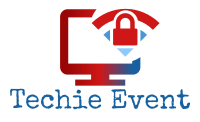In the digital age, students are bombarded with information from a variety of sources—some reliable, others not. For educators and librarians, the challenge is teaching students to efficiently evaluate the credibility of these sources, particularly in academic contexts. One of the most powerful tools available for this purpose is JSTOR, a digital library that provides access to thousands of scholarly journals, books, and primary sources. However, simply having access to JSTOR is not enough; students must also be taught how to critically assess the quality and relevance of what they find.
Why Teaching Source Evaluation Matters
Academic research demands rigorous standards, and not all information—even that which appears scholarly—is created equal. With the rise of misinformation, clickbait, and AI-generated content, students must be equipped to distinguish legitimate scholarship from unreliable material. Teaching students to vet sources quickly and effectively not only enriches their academic work but also prepares them as informed citizens and professionals.
What Is JSTOR and Why It Stands Out
JSTOR (short for Journal Storage) is a trusted, subscription-based platform used by universities, colleges, and libraries around the world. It provides access to a comprehensive digital archive of scholarly literature across numerous disciplines. Here’s why JSTOR is considered a premier research tool:
- Peer-reviewed content: The majority of articles on JSTOR have undergone rigorous peer review, enhancing their credibility.
- Disciplinary breadth: JSTOR covers a wide array of subjects—from the humanities and social sciences to environmental studies and economics.
- Historical depth: With archives that date back to the 1800s, JSTOR provides valuable historical perspectives often lacking in newer databases.
Despite JSTOR’s advantages, the ability to rapidly differentiate between a useful and an inadequate article remains an essential skill for students.
Key Strategies for Vetting Sources on JSTOR
To help students use JSTOR effectively, educators should teach specific strategies for evaluating content quickly. Below are some methods that can be incorporated into classroom instruction or individual research tutorials.
1. Examine the Publication and Journal
Encourage students to look into the source journal before diving into an article. Prestigious journals often indicate high editorial standards and comprehensive peer review procedures.
- Is the journal affiliated with a reputable institution or organization?
- Does it have a high impact factor?
- Is it well-cited by other scholars?
JSTOR provides background information on each journal, including its scope, publisher, and publication history—a valuable starting point for evaluating legitimacy.

2. Assess Author Credentials
Students should be taught to investigate the background of article authors. In JSTOR, author names are typically hyperlinked to other works by the same individual.
Check for the following:
- Academic affiliations (e.g., are they professors or researchers at credible institutions?)
- Other works published in well-regarded journals
- Expertise in the subject matter being discussed
This evaluation helps determine whether the author has the authority to speak on the topic.
3. Scan the Abstract and Introduction
Time-pressed students may be tempted to read an entire article before deciding if it’s relevant. Instead, they should be trained to use the abstract and introduction as tools to make that decision quickly.
These sections typically reveal:
- The main research question and objectives
- Key findings or conclusions
- The context and relevance of the study
By evaluating just these portions, students can determine the article’s alignment with their research needs without wasting valuable time.
4. Evaluate Methodology and Evidence
Not all peer-reviewed articles carry the same level of scholarly rigor. One distinguishing factor is the methodology.
Instruct students to consider:
- Whether the article uses quantitative or qualitative methods—or both
- If data collection and analysis are clearly explained and valid
- How evidence supports the authors’ conclusions
When the methodology is transparent and logically constructed, students can more confidently use the article in their research.
5. Note the Publication Date
While JSTOR offers rich archives, not all academic topics benefit from older sources. It’s important to check the publication date to ensure that information is timely and relevant.
As a general rule:
- STEM fields require the most up-to-date data
- Humanities and historical texts can rely more on older sources
Teach students to balance classic studies with recent developments for a comprehensive perspective.
Using JSTOR’s Built-in Tools for Evaluation
JSTOR isn’t just a static archive—it provides features that can assist students in evaluating content faster.
- Citation tracking: Enables students to see how many times an article has been cited, suggesting its impact.
- Related content: Helps locate similar articles, improving relevance and reducing research time.
- Downloadable citations: Ensures proper attribution and saves time with formatting references.

Integrating JSTOR Training into Curriculum
To be effective, instruction on vetting scholarly sources with JSTOR should be incorporated into courses at various academic levels. This can be done through:
- Library instruction sessions: Many academic libraries offer workshops or class visits that introduce JSTOR and its features.
- Embedded information literacy assignments: Assign tasks that require use of JSTOR and evaluation of sources as part of graded work.
- One-on-one consultations: Encourage students to meet with librarians or faculty for tailored guidance.
Challenges and Common Pitfalls
Even with training, students might encounter difficulties. Some common pitfalls include:
- Assuming all content on JSTOR is equally reliable just because it’s behind a paywall
- Using JSTOR too narrowly and missing out on other relevant databases or current research not yet archived
- Overreliance on abstract-level understanding without engaging with the full article
Instructors should address these issues proactively by highlighting best practices and encouraging critical thinking.
Conclusion
Teaching students to vet sources quickly is a skill that pays dividends far beyond the classroom. JSTOR, with its wealth of academic literature, offers a fertile ground for cultivating these skills. However, students must also be taught to think critically about each article’s origin, methodology, and relevance. By integrating robust source-evaluation instruction into academic programs, educators empower students to navigate scholarly content with confidence and discernment.
As information continues to expand at breathtaking pace, those who can evaluate it skillfully will not only succeed academically but also become informed participants in a complex world.
